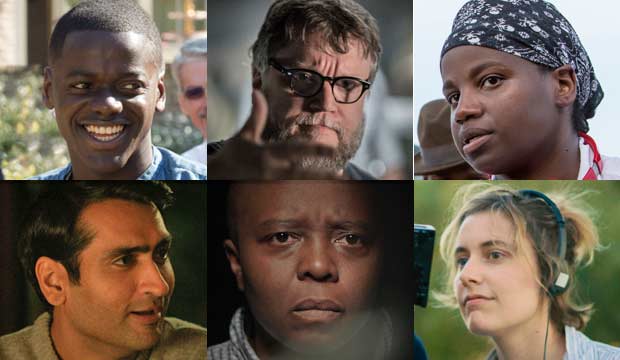The Lack of Disability Visibility in British TV
Despite the growing awareness on the topic of representation in the media, it's still apparent that disabled people are largely underrepresented, not only onscreen, but also in the film and TV workforce. The Creative Diversity Network's 2017 report, Diamond: The First Cut, has looked extensively into employment statistics from the BBC, ITV, Channel 4, Channel 5, and Sky in order to see where minorities lie in the film and TV industry. The CDN states that "Diamond (Diversity Analysis Monitoring Data) is an end-to-end process for collecting and reporting diversity data. Diamond creates, for the first time, a common standard for monitoring diversity across all the main broadcasters." (2016). The data found will be important in revealing the strengths and weaknesses of UK Broadcasters when it comes to representing the underrepresented both on and behind the screen.
In recent years, Channel 4's coverage of the Paralympics and Winter Paralympics has become transformative in the way in which disability is perceived on screen. C4 not only shows disabled sport on TV, but also uses disabled presenters during their sports coverage. The Last Leg (Channel 4, 2012 - Present), which originally ran alongside C4's 2012 Paralympic coverage as an alternative view of the days events, is now in its 13th series and features two disabled hosts (Adam Hills and Alex Brooker). In 2016 with its 'Year of Disability', Channel 4 introduced disabled continuity announcers between programmes during prime time - along with subtitles - "as part of its commitment to opening up the airwaves to alternative voices." (2016). This sort of exposure by Channel 4 is undoubtedly important in helping to shape the way disabled people are viewed and heard in society, thanks to what we see and hear on our TV screens.
Unfortunately however, in spite of the growing representation on-screen, there is little disability visibility in the industry itself. Diamond: The First Cut shows that the percentage of off-screen contributors working on projects commissioned by the aforementioned broadcasters is at 5.5%, compared to the 17% of disabled people that make up the UK national workforce (2017, pp. 17). Of course, it's not expected that the number of disabled entrants into the UK TV industry will be the same as those going into others, but it should be made easier for disabled people to enter this industry if they so wish and it should made more possible for them to succeed and prosper.
In recent years, Channel 4's coverage of the Paralympics and Winter Paralympics has become transformative in the way in which disability is perceived on screen. C4 not only shows disabled sport on TV, but also uses disabled presenters during their sports coverage. The Last Leg (Channel 4, 2012 - Present), which originally ran alongside C4's 2012 Paralympic coverage as an alternative view of the days events, is now in its 13th series and features two disabled hosts (Adam Hills and Alex Brooker). In 2016 with its 'Year of Disability', Channel 4 introduced disabled continuity announcers between programmes during prime time - along with subtitles - "as part of its commitment to opening up the airwaves to alternative voices." (2016). This sort of exposure by Channel 4 is undoubtedly important in helping to shape the way disabled people are viewed and heard in society, thanks to what we see and hear on our TV screens.
 |
| Promotional photo for The Last Leg. [L to R] Josh Widdecombe, Adam Hills, and Alex Brooker. (source). |
Unfortunately however, in spite of the growing representation on-screen, there is little disability visibility in the industry itself. Diamond: The First Cut shows that the percentage of off-screen contributors working on projects commissioned by the aforementioned broadcasters is at 5.5%, compared to the 17% of disabled people that make up the UK national workforce (2017, pp. 17). Of course, it's not expected that the number of disabled entrants into the UK TV industry will be the same as those going into others, but it should be made easier for disabled people to enter this industry if they so wish and it should made more possible for them to succeed and prosper.
 | |
|
In order to help combat this longstanding issue, Channel 4 and the BBC have implemented their own diversity and inclusion charters, pointing out the need for targets to raise the number of disabled employees. On the topic, Channel 4 stated that "although we’re the industry leaders in mainstreaming diversity and developing disabled talent we don’t employ enough people with disabilities." (2015, pp. 4). With C4's 2016 'Year of Disability', the broadcaster "progressed the careers of more than 20 disabled mid-level talent in 20 of our biggest suppliers" (2016, pp. 1) as a part of their ongoing commitment to diversity both on and off the screen. These pledges from some of the UK's top broadcasters shows signs that times are changing for disability representation, both on TV and in the TV industry itself.
The employment of more people with disabilities in mid to top level talent at broadcasters such as Channel 4 can only do good. Hopefully, with more people like this working for broadcasters and production companies, more true-to-life, genuine, and authentic programmes can be made surrounding disability, meaning for better exposure of this underrepresented group in the media, improving attitudes in our day to day lives.
The employment of more people with disabilities in mid to top level talent at broadcasters such as Channel 4 can only do good. Hopefully, with more people like this working for broadcasters and production companies, more true-to-life, genuine, and authentic programmes can be made surrounding disability, meaning for better exposure of this underrepresented group in the media, improving attitudes in our day to day lives.



Comments
Post a Comment